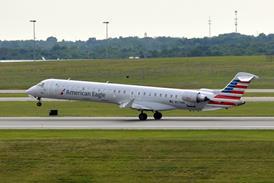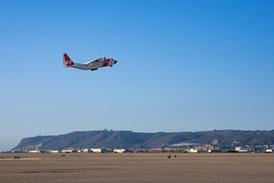Kate Sarsfield/LONDON
Growth in the world's turbine-powered business aircraft fleet has been constant over the past 12 months with inventories climbing once again by around 4%, from 19,373 aircraft in 1999 to 20,073 recorded so far this year.
This total, however, marks an almost 40% increase since 1990 when only 14,000 turbine-powered aircraft were recorded. If analysts' predictions are realised, this growth trend is set to continue well into the current decade.
The boost in the past year can be attributed to the record rise in the number of jet aircraft, from 10,068 to 10,714. The jet fleet manoeuvred into pole position in 1997, ahead of turboprops, for which the fleet in the past 12 months rose by only 54 aircraft, to 9,359.
New generation aircraft

The soaring jet numbers reflect a hike in deliveries of the new generation business aircraft, including Bombardier's Global Express and Learjet 45, Boeing Business Jet, Gulfstream V as well as Cessna's Citation Bravo and Excel. In the last 12 months, Cessna's Citation CJ1, CJ2, Encore and Fairchild Dornier's 328JET also entered service.

The upsurge shows no signs of abating as manufacturers continue to work off hefty order backlogs and fill niches in the market by introducing new models: notably the entry level Eclipse 500, Raytheon Premier I and Sino Swearingen SJ30-2; the mid-size and super mid-size Bombardier Continental, Citation Sovereign and Raytheon Hawker Horizon; and regional airliner-based Embraer RJ-135 Legacy and Fairchild Dornier Envoy 7. The service entry of new turboprop-poweredaircraft, such as New Piper's Malibu Meridian, Ibis Aerospace's Ae270 and Advanced Aerodynamics and Structures' Jetcruzer 500, is also anticipated. The inevitable sanctions of commercial single-turbine and instrument flight rules operations throughout Europe are likely to continue driving up sales across the region.
This position is supported by US powerplant and avionics manufacturer Honeywell Aerospace (formerly AlliedSignal), which, in its 1999 annual outlook on business aviation, examined the purchase expectations of over 1,000 corporate flight departments in the Americas and Europe. The survey reveals that manufacturers' efforts to stimulate demand by launching new and derivative aircraft is paying dividends. Most flight departments surveyed by Honeywell have accelerated plans to replace or expand their fleets. They cite "improved cabin comfort at a competitive price" for aircraft in the superlight and mid-size markets, as key drivers, adds Honeywell.
Aircraft acceptance
The strength of the Western economies has been a major factor in stimulating this demand, bringing with it deep pockets for potential and present customers and bulging order books for the manufacturers. Furthermore, increasing demand for efficient and functional means of transportation has spawned a new culture of business aircraft use, bringing with it greater acceptance and accessibility.
The key driver has been, without question, the advent of fractional ownership, which has revolutionised the business aircraft industry since its introduction in 1986. According to the latest data from US research firm Aviation Data (AvData), the fractional fleet size has rocketed from seven aircraft in 1986 to nearly 400 today. Fractional programmes account for around 30% of new aircraft sales with order backlogs running into billions of dollars. The Wichita, Kansas-based company predicts there could be more than 1,000 fractionally owned aircraft by 2003. Says AvData: "Fractional ownership has been the greatest stimulant to business aviation for more than five years."
Fleet increases were only recorded in three continents: Asia, Central America and North America. The last predictably dominates the user market, recording a 5% hike in aircraft from 13,553 to 14,300, more than 70% of the world's fleet. Increased aircraft numbers in Asia and Central America appear to represent a turning point for these regions, which have for so long battled political and economic woes. Manufacturers and operators are now eying these markets as key growth regions and expect the upsurge, albeit small, to continue.
Slight drop for Europe
Europe, the second largest general aviation market with 11% of the world's fleet, witnessed a slight drop in aircraft from 2,049 to 2,017. This trend is unlikely to continue as deliveries of new generation aircraft, including the Learjet 45, Citation Excel, Falcon 2000 and Raytheon Hawker 800XP, to regional fractional ownership programmes and charter operators, gather pace. Some of these models, however, will replace many older generation aircraft which are proving too costly to upgrade in line with impending European airspace requirements, including reduced vertical separation minima, scheduled for implementation in January 2002.
Elsewhere, South America, which has the third highest concentration of corporate aircraft, recorded a further decline in user fleet from 1,577 to 1,523 aircraft. Africa's fleet declined by three aircraft overall to 590, with a drop in the turboprop fleet by 14 aircraft to 386, and a rise in jet itinerary from 193 to 204. Oceania, which includes Australia and the Pacific Islands, also saw its itinerary fall by three jet aircraft in recording a fleet of 244.
Source: Flight International























